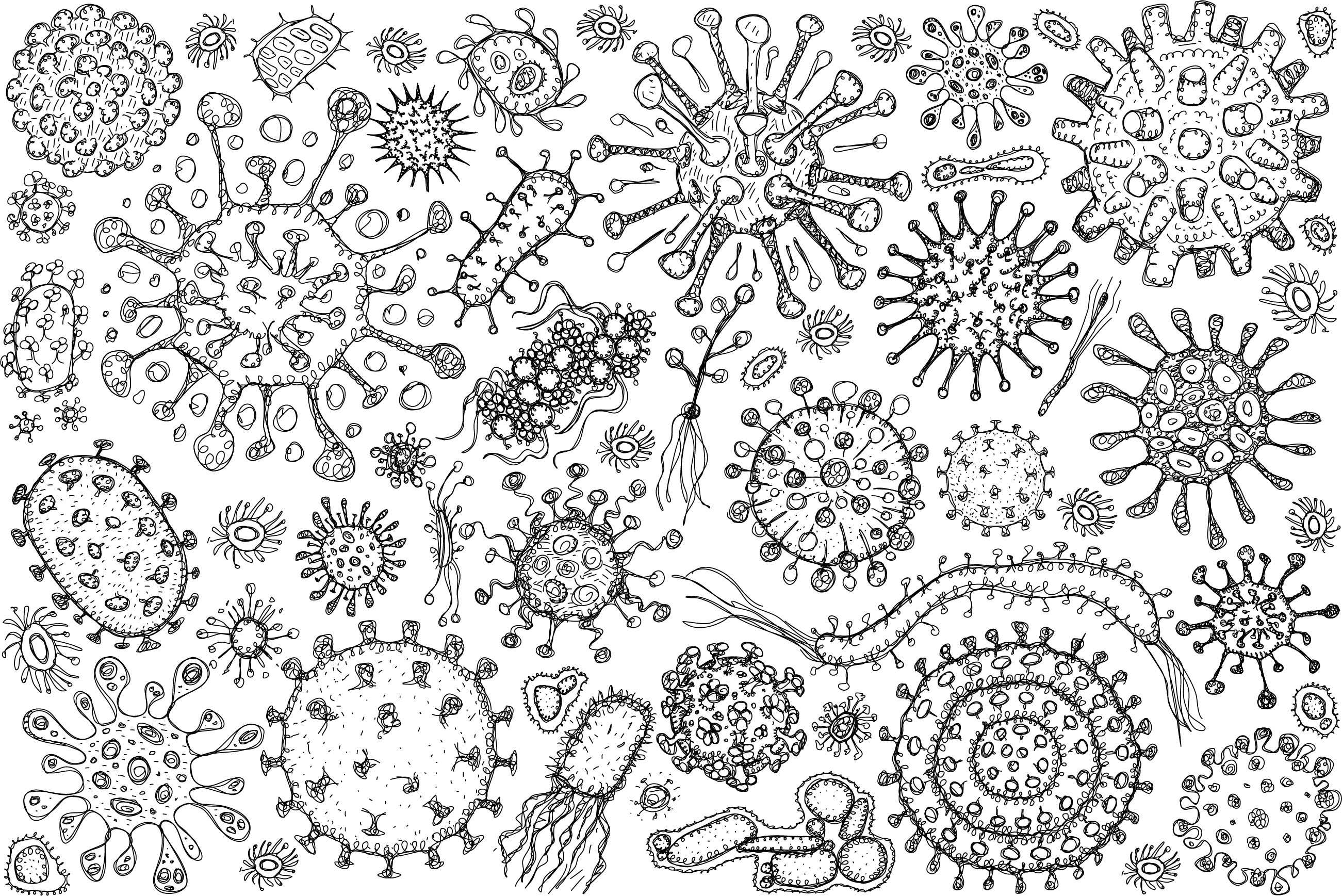
Seminar Title: It's about the journey and the destination: Tracking t cells during acute and chronic viral infections
Abstract: The intestinal epithelium exists in constant interaction with the micro- and macrobionts such as viruses, bacteria, archaea, protists, and helminthic worms that compose the host’s multibiome. Monitoring these diverse, and often transient populations requires a finely tuned ability to differentiate friend, and foe. Inflammatory responses against commensals can leads to disorders such as IBD while failure to mount an inflammatory response to pathogens can lead to chronic infection or death. These complex decisions are shaped both locally, through epithelial-immune cell crosstalk, and distally in secondary lymphatic organs serving as priming sites for adaptive immunity. Comparing infections in different regions of the intestine necessitates distinct pathogens and thus distinct metabolisms and Pathogen Associated Molecular Patterns (PAMPs). These fundamental differences in behavior and molecular identity provide loud signals drowning out finer distinctions in priming site or cellular interactions which may play roles in shaping the efficacy of immune responses. Here we used Murine Norovirus (MNV) strains which are identical in terms of PAMPs but with distinct infectious dynamics: MNV-CW3 induces an acute infection that is initiated in the small intestine (SI) and disseminates systemically before viral clearance due to a robust CD8+ T cell response; conversely, MNV-CR6 forms a persistent infection limited to epithelial cells in the large intestine that results in a reduced and ineffectual CD8+ T cell response. We first examined the role of two kinases (IKKα and IKKβ) controlling NF-κB signalling pathways in intestinal epithelial cells. While previously implicated in shaping helminth (IKKα) and bacterial infections (IKKβ), we found no effect on outcomes of either CW3 or CR6 in terms of viral loads or CD8+ T cell trafficking. We then pivoted to a more direct comparison and contrast of CD8+ T cell responses between CW3 and CR6 infections. Our data demonstrate that the site of initial intestinal infection dictates which node of the MLN complex hosts the earliest stages of antiviral CD8+ T cell activation and division, but that later stages of antiviral effector T cell expansion and tissue localization are driven by virus-specific behavior. In GI-restricted CR6 infection, MLN surveillance drives efficient trafficking of antiviral T cells to the GI tract. In contrast, the systemic CW3 infection results in splenic priming playing a compensatory role in directing intestinal CD8+ T cells. These results expand our understanding of how cues from distinct infectious locations and priming sites influence the outcome of antiviral CD8 T cell localization and function following infection of a continuous mucosal surface.
This is a hybrid seminar which you can attend in person in LSC3 (Life Sciences Institute, UBC Vancouver Campus) or on Zoom. If you are joining on zoom, please use the meeting ID and passcode below:
Join a Meeting: https://ubc.zoom.us/
Meeting ID: 91037 579420
Passcode: 579420
Life Sciences Centre, LSC 3, 2350 Health Sciences Mall MBIM itsupport@microbiology.ubc.ca America/Vancouver publicSeminar Title: It's about the journey and the destination: Tracking t cells during acute and chronic viral infections
Abstract: The intestinal epithelium exists in constant interaction with the micro- and macrobionts such as viruses, bacteria, archaea, protists, and helminthic worms that compose the host’s multibiome. Monitoring these diverse, and often transient populations requires a finely tuned ability to differentiate friend, and foe. Inflammatory responses against commensals can leads to disorders such as IBD while failure to mount an inflammatory response to pathogens can lead to chronic infection or death. These complex decisions are shaped both locally, through epithelial-immune cell crosstalk, and distally in secondary lymphatic organs serving as priming sites for adaptive immunity. Comparing infections in different regions of the intestine necessitates distinct pathogens and thus distinct metabolisms and Pathogen Associated Molecular Patterns (PAMPs). These fundamental differences in behavior and molecular identity provide loud signals drowning out finer distinctions in priming site or cellular interactions which may play roles in shaping the efficacy of immune responses. Here we used Murine Norovirus (MNV) strains which are identical in terms of PAMPs but with distinct infectious dynamics: MNV-CW3 induces an acute infection that is initiated in the small intestine (SI) and disseminates systemically before viral clearance due to a robust CD8+ T cell response; conversely, MNV-CR6 forms a persistent infection limited to epithelial cells in the large intestine that results in a reduced and ineffectual CD8+ T cell response. We first examined the role of two kinases (IKKα and IKKβ) controlling NF-κB signalling pathways in intestinal epithelial cells. While previously implicated in shaping helminth (IKKα) and bacterial infections (IKKβ), we found no effect on outcomes of either CW3 or CR6 in terms of viral loads or CD8+ T cell trafficking. We then pivoted to a more direct comparison and contrast of CD8+ T cell responses between CW3 and CR6 infections. Our data demonstrate that the site of initial intestinal infection dictates which node of the MLN complex hosts the earliest stages of antiviral CD8+ T cell activation and division, but that later stages of antiviral effector T cell expansion and tissue localization are driven by virus-specific behavior. In GI-restricted CR6 infection, MLN surveillance drives efficient trafficking of antiviral T cells to the GI tract. In contrast, the systemic CW3 infection results in splenic priming playing a compensatory role in directing intestinal CD8+ T cells. These results expand our understanding of how cues from distinct infectious locations and priming sites influence the outcome of antiviral CD8 T cell localization and function following infection of a continuous mucosal surface.
This is a hybrid seminar which you can attend in person in LSC3 (Life Sciences Institute, UBC Vancouver Campus) or on Zoom. If you are joining on zoom, please use the meeting ID and passcode below:
Join a Meeting: https://ubc.zoom.us/
Meeting ID: 91037 579420
Passcode: 579420

